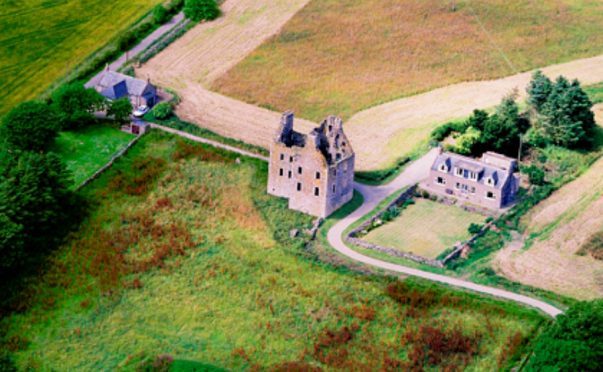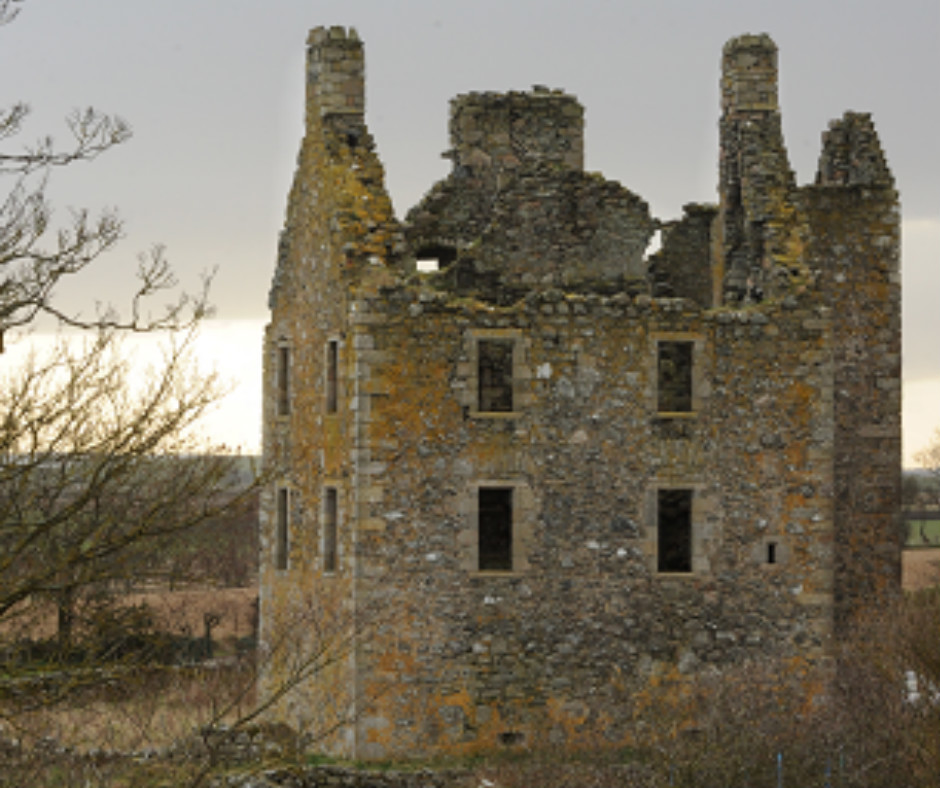The ultimate medieval fixer-upper has come on the market – a castle visited by James VI, with a price tag of just £150,000.
The ruins of Knockhall Castle in Newburgh, Aberdeenshire, date from 1565 and were used as a base by James VI while he visited the area.
Knockhall was gutted by an accidental fire in 1734 and now, centuries later, all that remains are the decimated stone walls of the famous old castle.
However, those interested in its rich history have the chance to purchase the ruins and restore the category B listed building to its former glory.
The castle sits in a beautiful natural location close to the River Ythan and the famous Forvie Sands, a designated nature conservation area populated by seals.
Ownership of the castle also includes becoming a “neighbour” of President Elect Donald Trump, whose Balmedie golf resort is just five miles south.
In their description, sellers Savills say: “The lands of Newburgh were held by the Sinclair family from the 13th century, with a settlement established there in 1261.
“The castle was probably built for Henry, Master of Sinclair, the future 6th Lord Sinclair, and it is recorded that James VI stayed with him at Knockhall on 9 July 1589.
“The castle was sold in 1633 to a son of Udny of that Ilk and was damaged in 1639 when taken by the Earl Marischal for the Covenanters.”
It continues: “The family occupied the castle until 1734, when an accidental fire gutted the building. This episode is associated with James Fleming the servant fool of the laird of Udny.
“Jamie is said to have not only saved the family from the fire, but also the laird’s iron character chest, which usually took three men to lift, by picking it up and throwing it out of a window.
“Knockhall Castle has been in the current owner’s family for hundreds of years, and was gifted to him on his 21st birthday.
“He has been stabilising the site at Knockhall which is a blank canvas for someone to develop the building’s full potential as a spectacular family home or business.”
The castle is just five miles from Trump International Golf Links in Balmedie, Aberdeen, and is being marketed as having both residential and commercial potential.
The castle was formerly a towerhouse built over three stories. To the south of it there was an enclosed courtyard.
However, all that remains today is a partly-destroyed round tower and some original stone walls. Some windows have survived and maintain their 16th-century style whilst some have gunloops in their sills.
The castle is open to the elements with no roof and is accessed by a private road.is also the potential for archaeology to be carried out around the tower due to its rich history.
Any new owner of the property would be have access to mains electricity from existing services to nearby houses however, they will need to contact Scottish Water about a potential water supply.
James VI and I was King of Scotland until 1603, when he became the very first Stuart king of England as well, thus creating the kingdom of Great Britain.
He was born in 1566 in Edinburgh Castle to Mary, Queen of Scots and her second husband, Lord Darnley.
When Elizabeth I died in 1603, James became King of England and Ireland and only returned to Scotland once again, in 1617.

